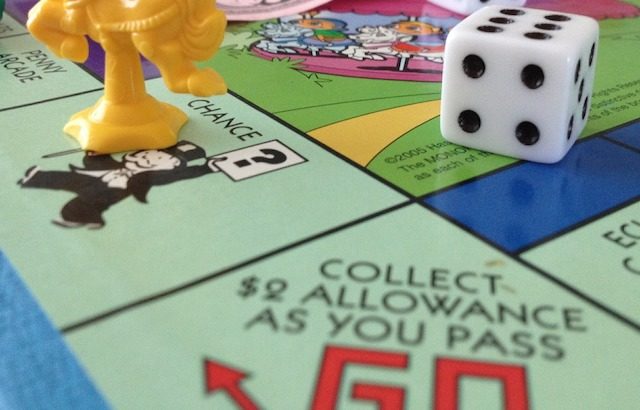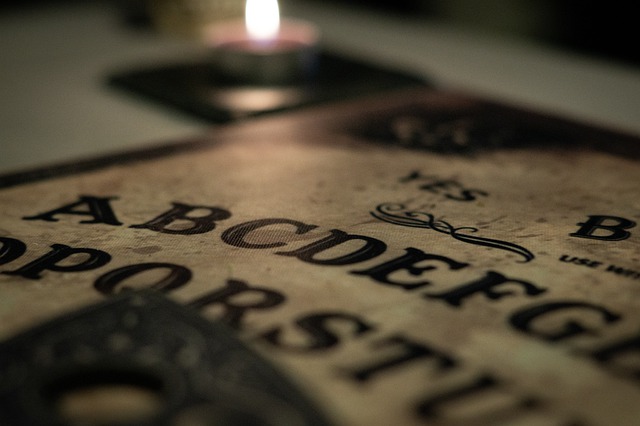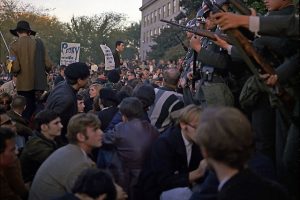10 Fun Life-Size Board Games for Outdoor and Party Play
Ever felt like your favorite childhood board games shrank while you weren’t looking? Turns out, you weren’t imagining it—your grown-up perspective just makes everything seem smaller. But what if you could step inside those games instead? Imagine playing life-sized Monopoly where you are the token, or dodging real-life Hungry Hippos!
Here’s a twist you didn’t know you needed: 10 classic board games reimagined at epic, room-filling scale. From chess with human-sized pieces to a Jenga tower taller than you, these aren’t just games—they’re full-blown experiences.
Why go big? Because nostalgia hits harder when you’re literally walking across a giant Candy Land board or shouting “UNO!” across a park. It’s the same games you love—just 10 times more immersive.
Ready to see which classics made the cut? Let’s dive in—no tiny dice required.
10. Connect Four: A Simple Game With Seriously Unexpected Records
At first glance, Connect Four might seem like a pretty straightforward game—drop the discs, line them up, win. But behind this simplicity lies a surprisingly rich world of quirky records and mind-bending adaptations that take the game far beyond the kitchen table.
Take, for instance, Josh Graber, who managed to drop a counter into the board from an astonishing 31.5 inches above it without missing the slot. That’s more than just coordination—it’s borderline precision engineering. Then there’s Constantine Markides, who once balanced a jaw-dropping 76 game pieces in one hand. And let’s not forget Emily Wilson, who kept seven counters spinning simultaneously—a trick that feels closer to circus performance than casual board gaming.
But the wildest feat may have been the creation of the largest Connect Four board ever built. In 2009, at The Bell House in Brooklyn, New York, a massive board stole the spotlight at a local tournament. This oversized version stretched 45.25 inches wide and 32.25 inches tall, with counters that measured 5.25 inches in diameter—roughly the size of a teacup saucer. Not exactly something you’d store in the closet.
Still not impressed? Then you’ll probably want to check out something way more extreme: the real-life Connect Four challenge from Jet Lag: The Game, created by YouTuber Sam Denby. In this travel-meets-strategy game, human players act as the counters, and the “board” is none other than the entire U.S. West Coast. Two teams compete by journeying across states, taking on challenges in state capitals to “claim” them. The twist? It’s all done on a $5,000 budget, and the first team to line up four states in a row—just like in the classic game—wins.
It’s part travel show, part real-life puzzle, and 100% addictive to watch. For fans of The Amazing Race, competitive board gaming, or just wild internet experiments, this version of Connect Four takes things to a whole new level.
In a world where digital distractions are everywhere, there’s something oddly refreshing about how a simple, colorful game from the ’70s can still inspire world records, giant installations, and even full-scale travel competitions.
9. The Royal Game of Ur: A 4,500-Year-Old Mystery Board Game You Can’t Help But Marvel At
Long before Monopoly, before chess, even before dice were a household toy, there was the Royal Game of Ur—a game so ancient it makes most modern board games look like yesterday’s news. Dating back to somewhere between 2600 and 2400 BC, this remarkable artifact was unearthed in what used to be the royal tombs of Ur, a once-glorious Sumerian city-state located in present-day Iraq.
Think about that for a second. This isn’t just an old board game—it’s a glimpse into how humans, over four millennia ago, passed the time, competed, and maybe even gambled under flickering oil lamps.
The board itself? It’s a curious structure—twenty intricately decorated squares, grouped into three distinct sections. Some squares are marked with patterns whose meanings remain a mystery. Historians and scholars have attempted to crack the rules, but we still don’t fully know how the game was played. There’s speculation, and even AI has joined the investigation, but much remains up in the air. British Museum curators believe it was a two-player game, with black and white tokens, and involved a mix of luck and tactics—kind of like an ancient precursor to backgammon.
But here’s where it gets even more fascinating. To mark the launch of their educational website, mesopotamia.co.uk, the British Museum commissioned a giant version of the Royal Game of Ur. And not just large—it was life-sized. Imagine stepping into a board game, where each square is big enough to stand in, surrounded by ancient Sumerian art and rules open to your interpretation. The oversized version even included tetrahedral dice, just like the original, adding to the immersive experience.
It’s one of those rare cases where history meets imagination, inviting visitors to not just observe the past, but to play inside it. Whether it was a game of kings, a pastime for commoners, or a ritual of luck and fate, one thing is clear: the Royal Game of Ur is a spectacular reminder that humans have always loved to play—and sometimes, the rules don’t even need to be clear for the fun to begin.
8. Monopoly

Ever dreamed of stepping into a real-life Monopoly board? Well, now you can—without needing oligarch-level wealth (just 60p per minute). Monopoly Lifesized, London’s newest tourist attraction, turns the classic property-hoarding game into a physical adventure—complete with giant tokens, puzzle rooms, and the cutthroat thrill of bankrupting your friends.
How It Works
Forget dice—this 15-meter x 15-meter behemoth is more like an escape room meets game show. Players (as oversized Scottie Dogs or Racing Cars) complete challenges tied to iconic London locations. Fleet Street? Solve a crossword like it’s 1920. Bond Street? Bid on “art” like a wannabe tycoon. The twist? You’re not just buying properties—you’re surviving them.
Three Ways to Play (and Pretend)
- Classic Mode – Nostalgia overload with old-school London vibes (think MI6 spy codes and Fleet Street ink stains).
- Luxury Mode – Live like a billionaire (fake gambling in Coventry Street, “shopping” on Regent Street).
- City Mode – Basically London tourism simulator (minus the crowds and Tube delays).
Funny side effect? You’ll leave either hating capitalism or secretly wishing you owned Mayfair in real life. Either way, it’s the most uniquely British way to relive childhood—just with less cardboard and more walking.
7. Trivial Pursuit: The Board Game That Took Over a Belgian City Square

You might think of Trivial Pursuit as that dusty box on your shelf, a nostalgic throwback to family game nights and heated debates over obscure facts. But in August 2014, the classic trivia game took a bold, unexpected turn—transforming into a life-sized spectacle in the heart of Liège, Belgium.
To mark the 100th anniversary of the outbreak of World War I, the city installed a giant Trivial Pursuit board—and we’re talking giant. Spanning over 400 square meters, this real-world version of the game was entirely themed around the First World War, blending history, culture, and interactive play in a way that felt both educational and strangely whimsical.
Locals and tourists alike became players, rolling a huge inflatable die and moving human-sized counters across the oversized board. Each time they landed on a space, they had to answer questions over a microphone, drawing curious crowds and unexpected tension. Get it right, and you’d earn a giant colored wedge—yes, just like the iconic plastic pie pieces from the tabletop version. Guiding the event were assistants dressed in full Victorian-era morning suits, adding an atmospheric touch that made the whole experience feel somewhere between a game show and historical reenactment.
Despite this dramatic public installation, Trivial Pursuit itself is actually a relatively modern board game. First published in 1979, it quickly became a household favorite. Its popularity even extended to television, with game show versions launching in several countries, including the BBC’s adaptation in 1990.
What’s so captivating about Trivial Pursuit is how it blends entertainment with knowledge—a format that continues to evolve. Whether you’re battling your family over 1980s movie trivia or standing in a European square answering questions about trench warfare, the game proves that curiosity is timeless—and so is the desire to win a slice of that legendary trivia pie.
6. Life-Sized Operation Game: A Brilliant Blend of Fun and Education

Imagine stepping into the shoes of a surgeon—but instead of a high-pressure operating room, you’re playing a giant, realistic version of the classic Operation board game. That’s exactly what a group of engineering students from Washington State University brought to life in 2023. Their creation? A human-sized patient with silicone organs and bones, designed to challenge players just like the original game, but with a twist that’s both educational and wildly entertaining.
This wasn’t just a fun project—it was a deep dive into 3D printing, computer-aided design, and even user safety. The students didn’t just learn; they turned their work into a public exhibit at the Palouse Discovery Science Center, where visitors can now try their hand at “surgery.” Using oversized tongs, players carefully extract organs without setting off the infamous buzzer—a test of steady hands and nerves!
What makes this so special? It’s not just nostalgia. The game bridges play and learning, making anatomy feel less like a textbook and more like an interactive adventure. Whether you’re a kid fascinated by the human body or an adult reminiscing about childhood games, this life-sized Operation delivers laughs, tension, and a surprising dose of knowledge.
Want to see it in action? Check out the EveryBODY exhibit—it’s proof that the best education doesn’t always happen in a classroom. Sometimes, it’s hiding inside a silly, buzzer-filled game.
5. Ouijazilla: The Giant Spirit Board That Took Over Salem

In the spellbinding town of Salem, Massachusetts—a place already steeped in spooky legends and witch trial history—something huge happened in October 2019. And by huge, we mean world-record-breaking. Locals and curious visitors gathered in awe as artist and self-proclaimed “Ouija maniac” Rick Schreck unveiled a supernatural marvel: Ouijazilla, the largest Ouija board ever made.
This wasn’t just a big board—it was a behemoth. Spanning an eerie 3,168 square feet, Ouijazilla was handcrafted by Schreck (who also serves as Vice President of the Talking Board Historical Society) and his family, lovingly referred to as the “Haus of Schreck.” The scale? Try 9,000 pounds of wood—more massive than a brontosaurus—and big enough to park five 18-wheel trucks on top of it. The planchette, the classic heart-shaped pointer used to “communicate” with the spirit world, was a jaw-dropping 15 feet long and weighed 400 pounds. Schreck even posed inside it for photos.
Everything about this project was obsessively detailed. The paint? Around 20 quarts of black enamel, all applied by hand. The design? Faithfully modeled after Hasbro’s 1998 version, but blown up to a scale so massive, Schreck estimated he could lay out 2,300 regular Ouija boards on top of Ouijazilla. Talk about raising the dead in style.
But what’s really wild is how this so-called “game” started. The original Ouija board dates back to 1891, introduced during the height of spiritualism in America. Back then, it was marketed not as a serious tool for ghost hunters, but as a parlor amusement—“Ouija, the Wonderful Talking Board,” read early advertisements in Pittsburgh toy stores. Since then, Ouija has morphed into a pop culture icon, feared by some, adored by others, and continuously reinvented.
As for Schreck, he’s more than a fan. He’s a collector, creator, and one-man revival movement. He’s even made boards from church pews and embalming tables, pushing the boundary between curiosity and creepiness. And while some may dismiss Ouijazilla as just an oversized toy, for others, it’s an invitation—to connect with the unknown on a colossal scale.
4. Giant Jenga Played by Construction Machines? Yes, It Happened

Picture this: a skyscraper-sized Jenga tower, but instead of nervous fingers pulling out wooden blocks, it’s massive construction machines doing the heavy lifting—literally. In 2019, Caterpillar (CAT)—the king of bulldozers and excavators—decided to smash the Guinness World Record for the largest Jenga game ever. And trust us, this wasn’t your childhood version.
Each “block” was a 600-pound laminated pine beam, stretching 8 feet long—so yeah, slightly bigger than the flimsy pieces in your living room. With just 27 beams (half a normal set, but weighing a total of 8.1 tons, aka a T-rex or school bus), CAT’s team orchestrated a 28-hour engineering ballet using their heavy machinery. A 320E excavator and a 277D multi-terrain loader became the players, delicately plucking and stacking beams under the watchful (and slightly nervous) eye of Chad Cremeens, CAT’s field operations manager.
Why? Part PR stunt, part proof of precision control, the whole spectacle was designed to show off just how nimble these giant machines could be. And no, they didn’t let the tower crash—that would’ve been way too risky. Instead, they quit while they were ahead, stopping at 13 layers and 20 feet tall, leaving everyone impressed and, thankfully, unharmed.
Want to see heavy equipment flex its finesse? This record-breaking Jenga game proves even monster machines can have a delicate touch.
3. A 25-Ton Mousetrap That You Can’t Help But Watch in Awe
Remember the board game Mousetrap—that chaotic, colorful, build-it-as-you-go contraption where one wrong move sends plastic boots, marble balls, and diving men into motion? Now, imagine that exact wild setup—but 25 tons heavier and large enough to crush a car. Yes, it’s real. And yes, it travels across America’s fairs and science festivals like a bizarre mechanical circus.
This life-sized wonder is the brainchild of Mark Perez, a man whose obsession with Mousetrap began in childhood. He didn’t just play the game—he devoured it, collecting multiple sets, memorizing the blueprints, and dreaming of something far grander. Years later, his dream came alive in the form of the Life Size Mousetrap, a full-scale Rube Goldberg machine that looks like it was ripped straight out of a cartoon—but works with real-world physics.
Unlike the original tabletop game, where players take turns building the trap piece by piece, this version is too massive for that kind of play. Instead, it becomes a live performance, where audiences watch as the chain reaction kicks into motion—lever by lever, gear by gear—until a giant steel cage slams down, completing the elaborate sequence. It’s got working pulleys, gravity-fed marbles, and even a human-sized boot that stomps down with comic precision. And while you might not be able to move the pieces yourself, you can set it off and feel the thrill of Newtonian physics come crashing down.
Perez and his crew haven’t kept this feat of mechanical theater tucked away, either. The Life Size Game of Mousetrap has become a traveling sideshow, popping up at events like Maker Faire, science centers, and museum exhibits where the goal is to inspire curiosity, spark laughter, and remind us that real-life engineering can be just as mesmerizing as anything on a screen.
2. When Scrabble Got Supersized: The Epic Wembley Stadium Showdown

Wembley Stadium, hallowed ground of football legends, transformed into a gigantic Scrabble board in 1998. Why? To celebrate the game’s 50th anniversary in the most over-the-top way possible. Forget pocket-sized tiles—these were dinner-table-sized monsters, requiring more muscle than your average word nerd could muster.
Who did they call in to do the heavy lifting? The British Army, of course. While the world’s top Scrabble champions strategized on the pitch, paratroopers sprinted across the field like letter-delivering commandos, placing each massive tile with military precision. It was a surreal clash of brainpower and brute strength—where else would you see a word wizard barking orders at a soldier holding a 50-pound “Q”?
The logistics were insane. The board stretched across the entire field, turning every move into a marathon of coordination. Players had to shout their plays across the distance, while the army crew hustled to keep up. No quiet coffee-shop Scrabble here—this was high-stakes, large-scale word warfare.
In the end, it wasn’t just a celebration of Scrabble. It was proof that even the nerdiest pastimes can become spectacles of epic proportions—especially when you add soldiers, a stadium, and tiles big enough to bench-press.
1. The Town That Plays Chess With Real People—and a 600-Person Medieval Army

You’ve seen giant chess boards in city parks. Maybe you’ve even pushed a knee-high knight across one. But have you ever seen a full medieval town turn itself into a living, breathing chessboard, complete with fire-breathers, flag-bearers, and a love story fit for a Shakespearean plot twist?
Welcome to Marostica, a charming Italian town that has turned chess into spectacle. Every two years, this quiet Veneto village transforms its main square into a gigantic chessboard—only instead of wooden pieces, it uses people dressed in full 15th-century costumes. Picture more than 600 performers—some on horseback, some wielding swords, all perfectly choreographed—reenacting a tale that dates back to 1454.
The legend? Two noble knights, Rinaldo D’Angarano and Vieri da Vallonara, both fell for Lionora, the daughter of the town’s lord. But instead of fighting a bloody duel, her father—thinking strategically—decreed they play a game of chess to win her hand. The loser? He’d still marry… but it would be Lionora’s sister, Oldrada. The entire story plays out during the festival, with costumed characters presiding over the board like nobles judging the fates of kingdoms. Moves are pre-scripted, but that’s part of the magic—it’s chess as theater, and the town turns into a stage.
But Italy isn’t the only place where human chess has taken a historical leap. Back in 1924, the Soviet Union put on what might be the most ambitious game ever played. In the heart of Leningrad (now St. Petersburg), two Russian chess masters, Peter Romanovsky and Ilya Rabinovich, played a five-hour game on a massive board painted onto Palace Square. Each “piece” was an actual human being—soldiers from the Red Army and the Navy, with knights mounted on horses and rooks flanked by men with cannons.
The players phoned in their moves from afar, and an estimated 8,000 people stood mesmerized as the battle of intellect unfolded across the square. It wasn’t fast-paced, but it was undeniably grand—and totally surreal. A kind of slow-motion war strategy before the age of Netflix, it remains a powerful reminder of how even a silent, cerebral game like chess can become epic, theatrical, and larger than life.
Curious about living chess or want to visit Marostica’s next festival? Check out Visit Veneto or dive into the town’s rich Marostica Chess Festival history.

























